Patabotany
A herbarium of vegetal lenses for looking at the world(s) anew
With excerpts from groWorld: Experiments in Vegetal Culture, groWorld story, Patabotanical Tarot notes
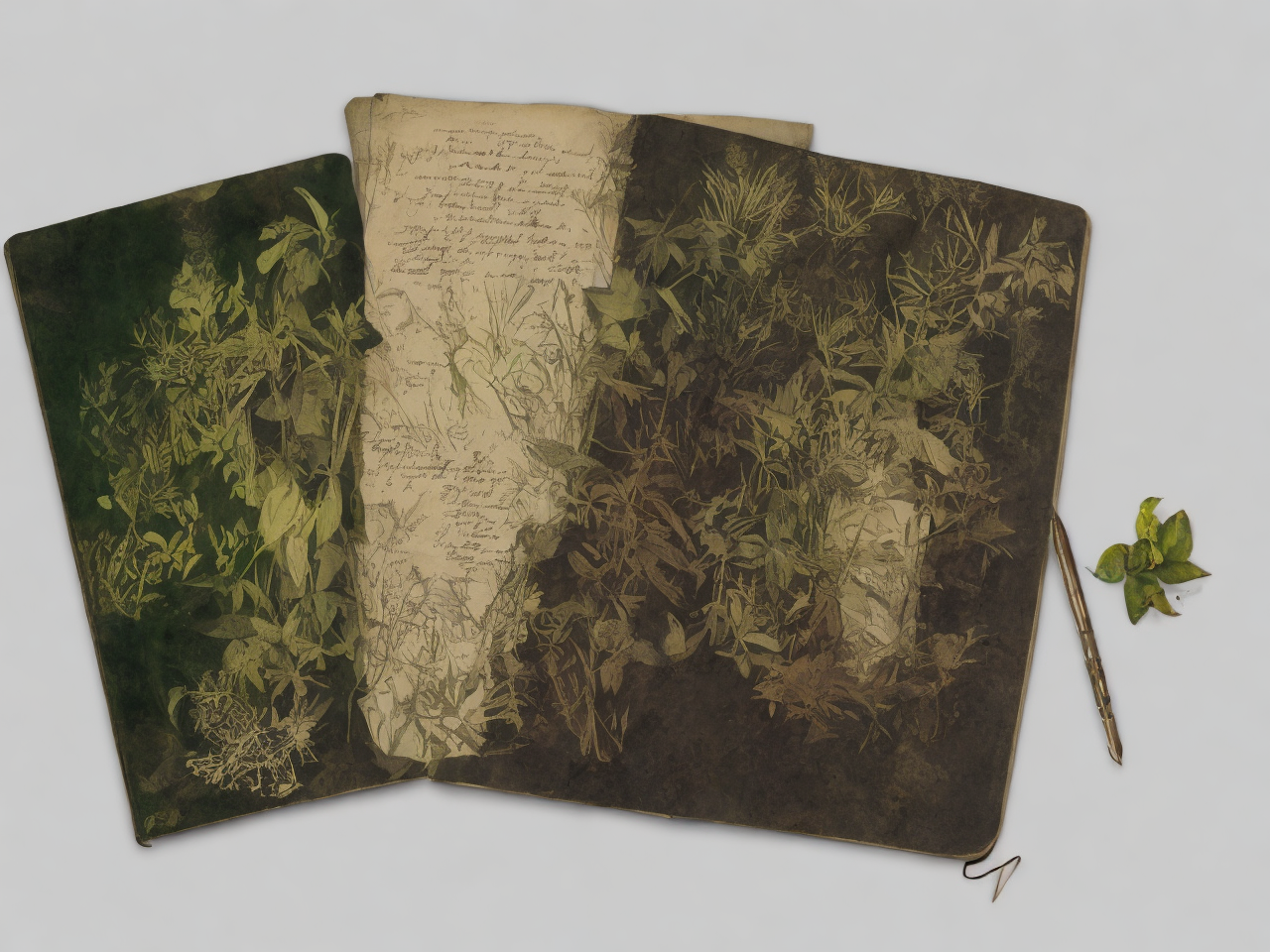
Parody offers a feminist rewriting strategy (...) by which the copy’s form imitates the supposed “original” form, yet serves a different content that in part clashes with it. The resulting gap causes an uncanny effect and, ideally, a smile or laughter. What follows, then, is certainly playful, but does not merely mock the models with absurd proposals; instead, it opens up the possibility of imagining another order of things and a glimpse at the contingency of the original.
Claire Brault in Feminist Imaginations in a Heated Climate: Parody, Idiocy, and Climatological Possibilities.
Into the layered world of pataphors
Thought experiment #1
Look at a plant, a collection of plants, a garden or a forest. Make a metaphor to describe what you are seeing. Next, imagine a world where the plants are the embodiments of this metaphor. What would the plants and this world look like? Make another metaphor to describe a plant or plants in this world. Describe this metaphor (pataphor — a metaphor of a metaphor), as if this is the world you have been in all along. For example: some plants already have names that suggest particular metaphors. Wild carrot has the nickname “Queen Anne’s lace” in some English-speaking countries. Imagine a world where this plant would be made of lace, grown especially for queens named Anne. Perhaps this is a world where textiles are grown by plants rather than made by humans. Fields of wild flowers might look like colourful textile bazaars, where fabrics of varying translucency flutter in the wind, in a Dance of Seven Veils. The wild carrot’s long pale roots caress the veils, dripping with an aromatic liquid, while the flowers shower passers by with a tangy, seductive rain. Finally, look back at the original plants and notice if/how your perception of these plants has changed (or not).
Zoom in on the particular
Thought experiment #2
Think of a plant, any plant. Find a particular aspect of the plant that is often overlooked or ignored or exists only in a myth, proverb, or poem. Focus on the overlooked aspect as if it were a critical object of scientific investigation. Imagine you were writing a patabotanical herbarium entry. What would you write? Make sure to use extensively technical jargon. Illustrate the text with patabotanical drawings and diagrams. An example of describing some plants’ capacity to fix nitrogen: “A Nitrogen Fixer absorbs, transforms and releases nitrogen. Nitrogen can be diffused back into the environment, and change the life-giving properties of the soil. This function can increase and decrease the density of the world. It can steer the growth and morphology of plants for generations. Micro-organisms assisting the plants in this function are swarms of organo-robotic creatures, hybrids of the vegetal and the machinic. They are capable of mechanically transforming matter on the scale of atoms and molecules. They influence the biomechanical make-up of soil by digging holes and tunnels. They move as swarms (not unlike insects) with and between the plants underground, and can jump from one plant to another when their roots touch.”
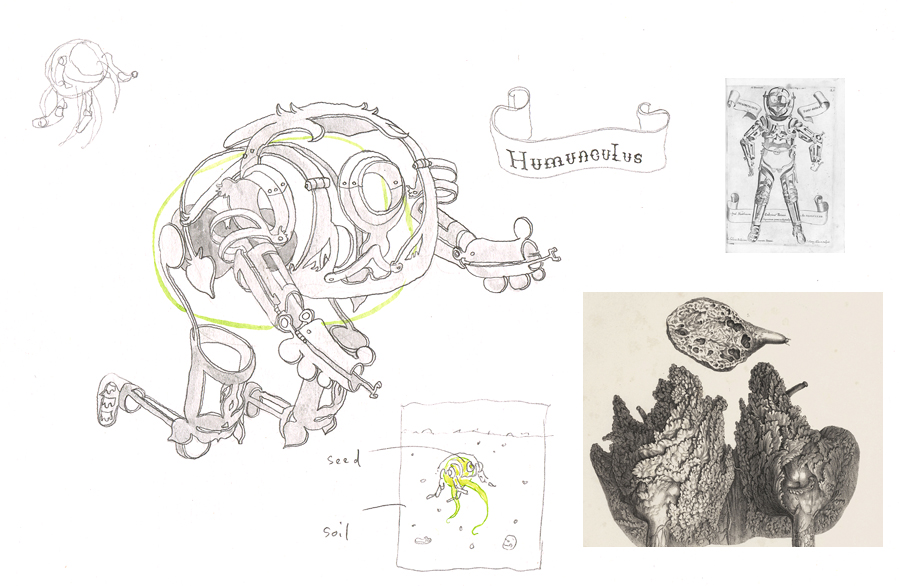 Nitrogen fixers. Illustration by Theun Karelse
Nitrogen fixers. Illustration by Theun Karelse
 Pataguild. Illustration by Lina Kusaite
Pataguild. Illustration by Lina Kusaite
The leaves are colour and colours leave
Patabotany is a hybrid between surrealism, ethnobotany, and pataphysics (the science of imaginary solutions). Patabotany symbolically attributes the properties of plants, “described by their virtuality, to their lineaments”. Based on the description of pataphysics by Alfred Jarry in Exploits & Opinions of Dr. Faustroll, Pataphysician: “Pataphysics is the science of imaginary solutions, which symbolically attributes the properties of objects, described by their virtuality, to their lineaments.”
 Exploits and Opinions of Dr. Faustroll, Pataphysician
Exploits and Opinions of Dr. Faustroll, Pataphysician
Patabotany poses the question: what if the metaphors, cultural rituals, and myths associated with plants could be found in their physical properties — in their shapes, colours, and functions? What if mushrooms were aliens attempting to communicate with us, what would their hearing sensorium look like? What if red roses went beyond the symbolism of love, and could write love letters through chemotropism guided by the lovers’ pheromones? What if soil-purifying plants could grow organs to turn heavy metals into precious rings?
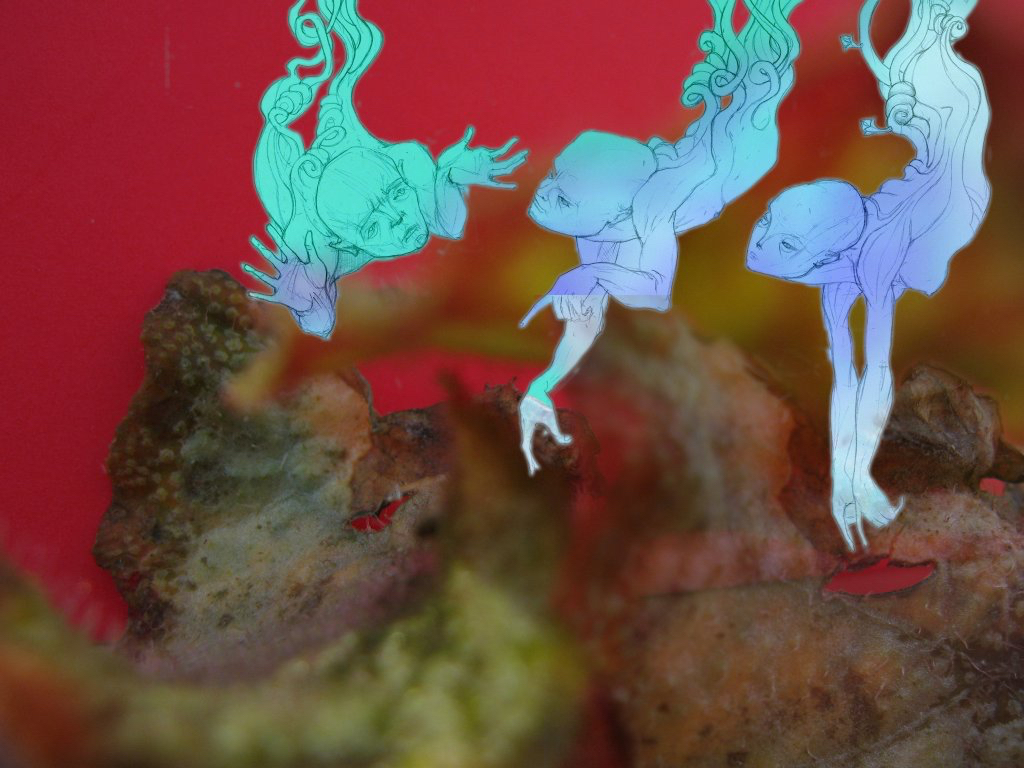
Patavines. Illustration by Lina Kusaite and Nik Gaffney
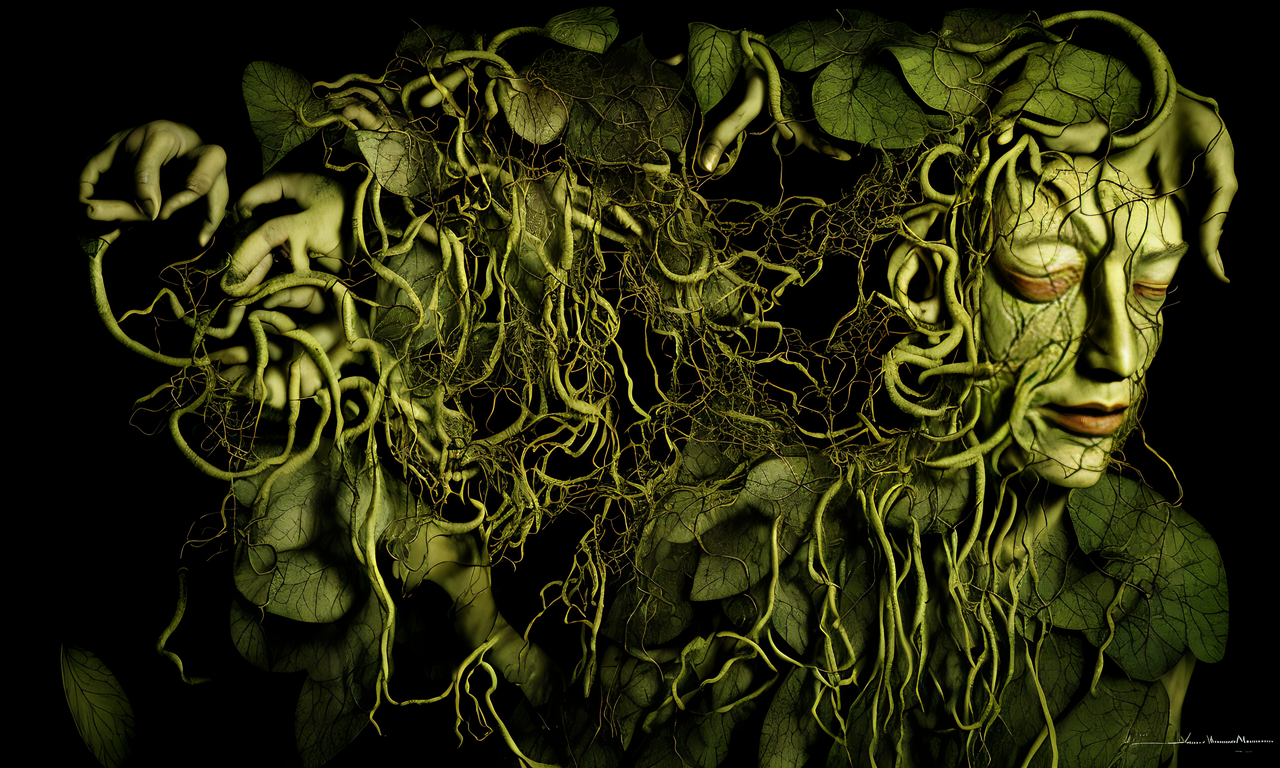 HPH, Human Plant Hybrid. Computer generated image.
HPH, Human Plant Hybrid. Computer generated image.
Imagine a world where vegetal and human cultures can cross-pollinate. A world where humans and plants communicate through form; where physical appearance functions as a multispecies signaling device. The bodies of humans, plants, and plant-human hybrids express their roles in the world and their relationships with others.
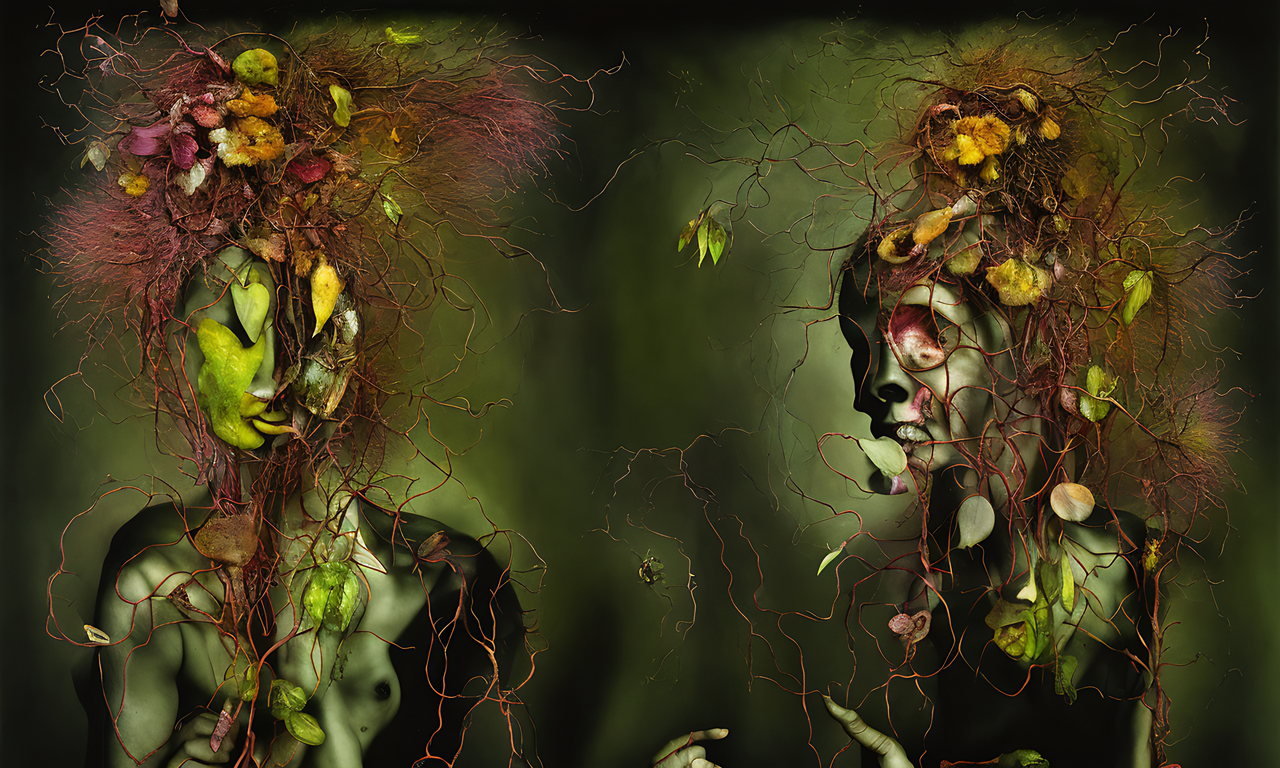 Portrait of an HPH. Computer generated image.
Portrait of an HPH. Computer generated image.
For example, “shrubs adapt their density and hardness to the presence or absence of external threats. In calm periods, they form leafy green screens, framed by their narrow, angular branches. In more turbulent times, or in parts of the world that need intimate and secluded spaces, the plants swell into fortified walls of woven thorns. The branches turn into spiky lengths of barbed wire, making the passage in/out of the world a very painful affair.” In this world the study of morphology is akin to linguistics, studying languages that evolved from wildly extended metaphors (let’s call them pataphors).
A pataphor is an interpretation of interpretation, an abstraction of abstraction. While the science of botany describes what plants are, the art of patabotany extrapolates what plants could be. It studies the (sometimes imaginary) vegetal peculiarities, exceptions, and contradictions of normative botanical rules. Scientific facts are juxtaposed with myths and popular beliefs, interspersed with personal dreams and collective speculations. In a cross-pollination between morphology and symbolism, biology, poetry, and herbalism.
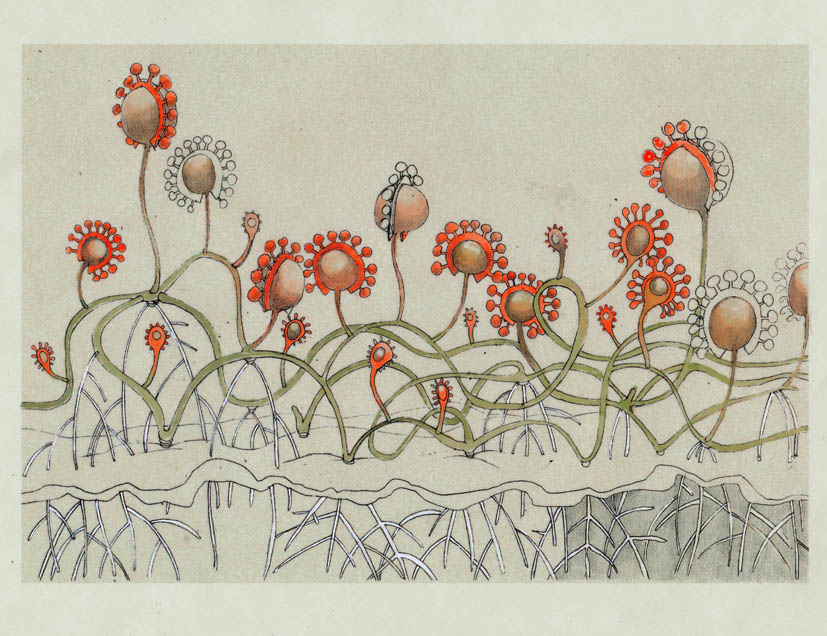
Herbaceous layer. Illustration by Lina Kusaite
In groWorld patabotany was grafted onto tarot, a storytelling and divination platform with its roots in card games and magic of the Italian Rennaissance. FoAM members cross-bred tarot archetypes and ethnobotanical properties of plants—as the adventurous Fool or the mysterious High Priestess—with patabotanically-evolved morning glory and lady’s mantle. Some of the chosen plants share history, morphology, or geography with the human archetypes; others are able to induce archetypal body and mind states or inhabit the same pataecology. Patabotanical Tarot builds on a peculiar and mysterious history of plant books, which includes such curiosities as The Voynich Manuscript, Lionni’s Parallel Botany, Serafini’s Codex Seraphinianus, and Dinah Hazell’s The Plants of Middle Earth: Botany and Sub-Creation.



Patabotanical Tarot (Hanged Man, Magician and Moon) by Theun Karelse
To investigate whether there could be consilience between game design, botany, and permaculture, FoAM & Tale of Tales prototyped a series of mini-games. One approach involved connecting physical plants to sensors so that information about their physical environment would influence the “weather” in a digital garden. In another prototype, the metaphor of a plant guild (as understood in permaculture) was used as a starting point for developing game mechanics, exploring the “first-plant perspective” in a collection of prototypes. “Playing with plants” in the collaborative spaces of social networks lead to Germination X, an attempt to introduce plants as guides in creating self-sustaining digital gardens, as a response to the industrial farming game Farmville.
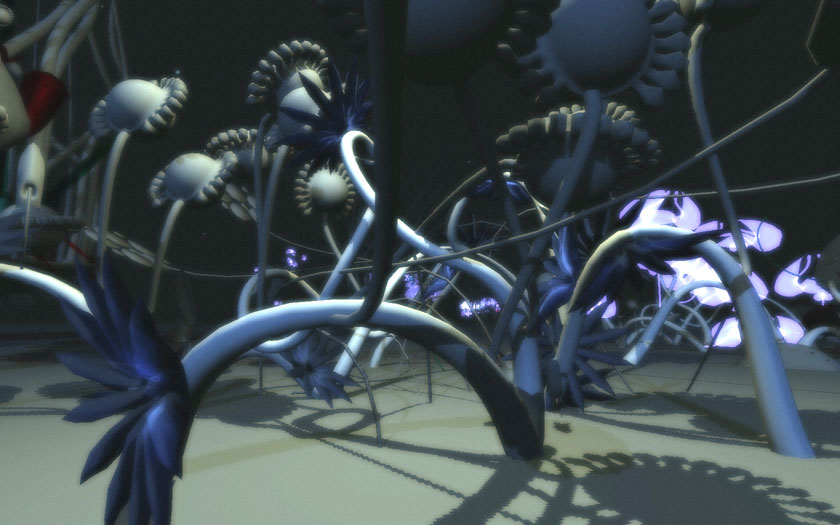
Patabotanical game prototype by Tale of Tales
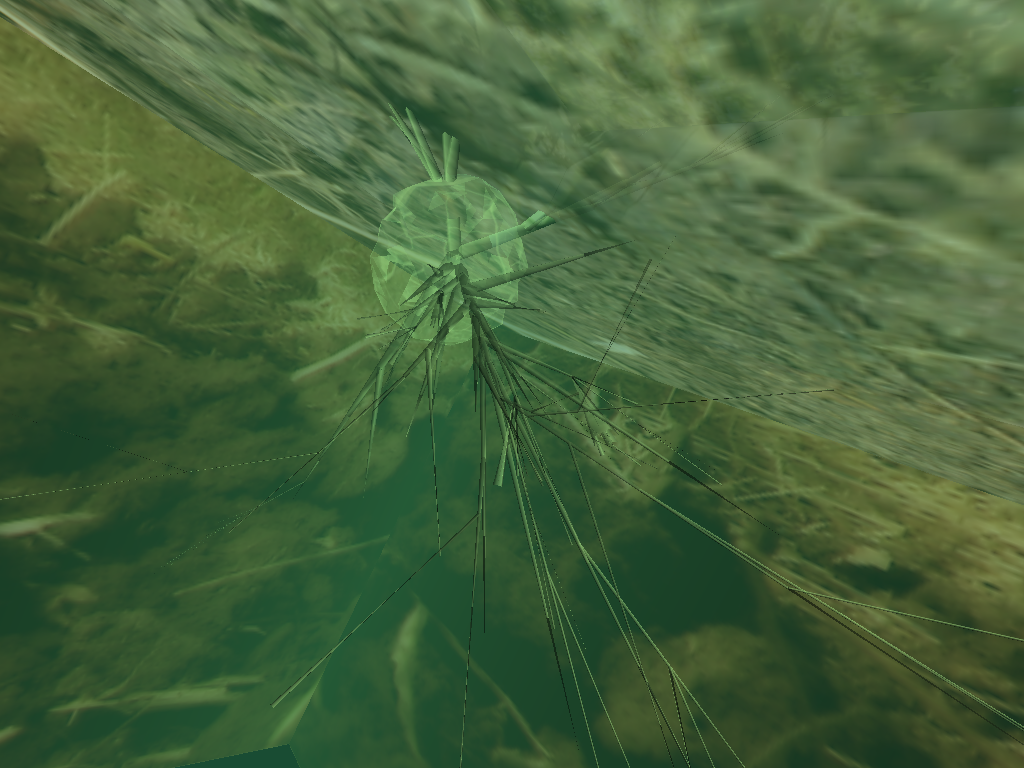
Plant Eyes game prototype by Dave Griffiths
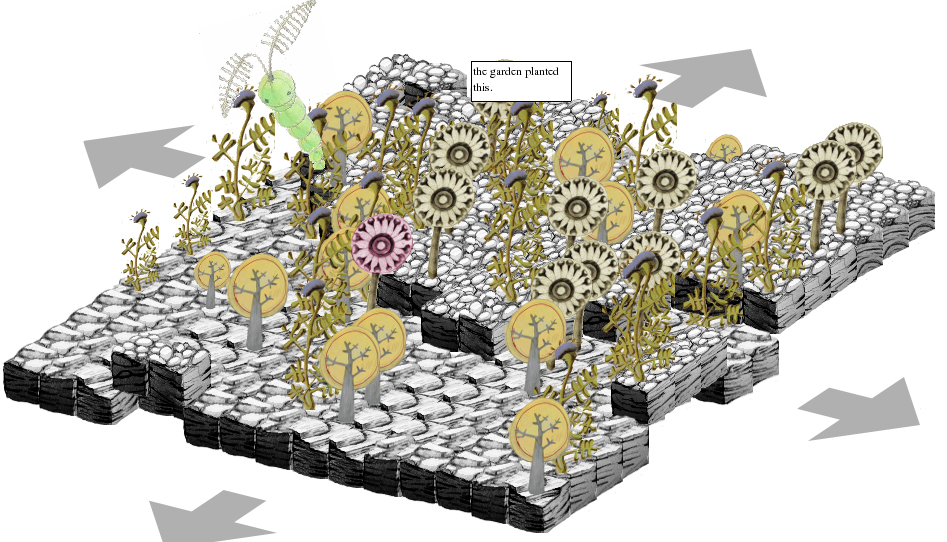
Germination X game prototype by Dave Griffiths and Lina Kusaite
Patabotany subverts the contemporary drive to instrumentalise plants as economic or utilitarian constructs. It describes a world where the believable is grafted onto the improbable, where logic is pollinated with a hybrid of sensuality and paradox, where botany and permaculture mutate into an epic of nurturing and seduction, in relentless cycles of living and dying.
🍂
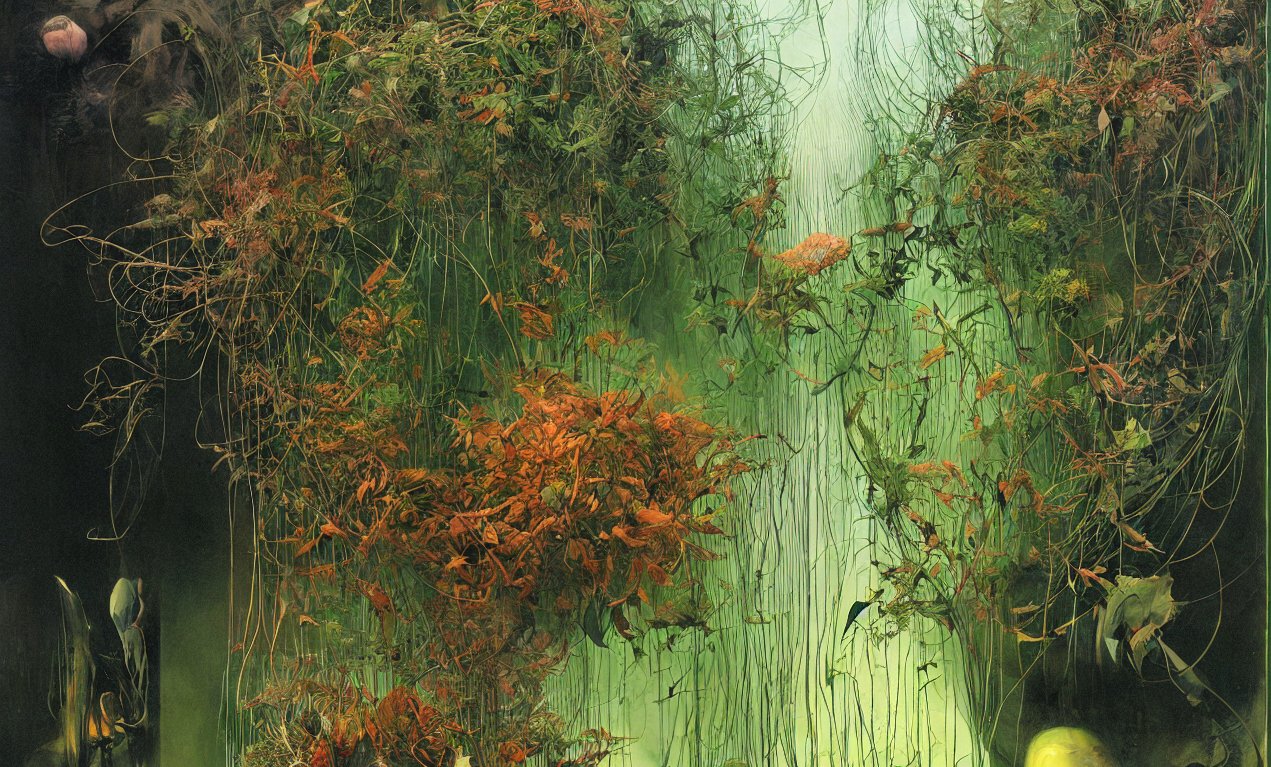 A patabotanical guild garden.
A patabotanical guild garden.
The multi-jointed balusters of these plants endlessly reach towards their kin, forming curved (sometimes gnarly, sometimes smooth) portals into and out of the world. On top of these portals, they sprout a meshwork of thin appendages that can also be joined with other plants, forming more or less dense tunnels, caves and niches; a habitat for the darkness-loving flora. Through the various relationships with their brethren, these plants guide the shape of the landscape. By creating labyrinthine spaces of light and darkness, they attract and repel different species that grow in lower layers. They are able to flower and bear fruit and so communicate with the non-vegetal species, and channel information from the outside into the vegetal realm.
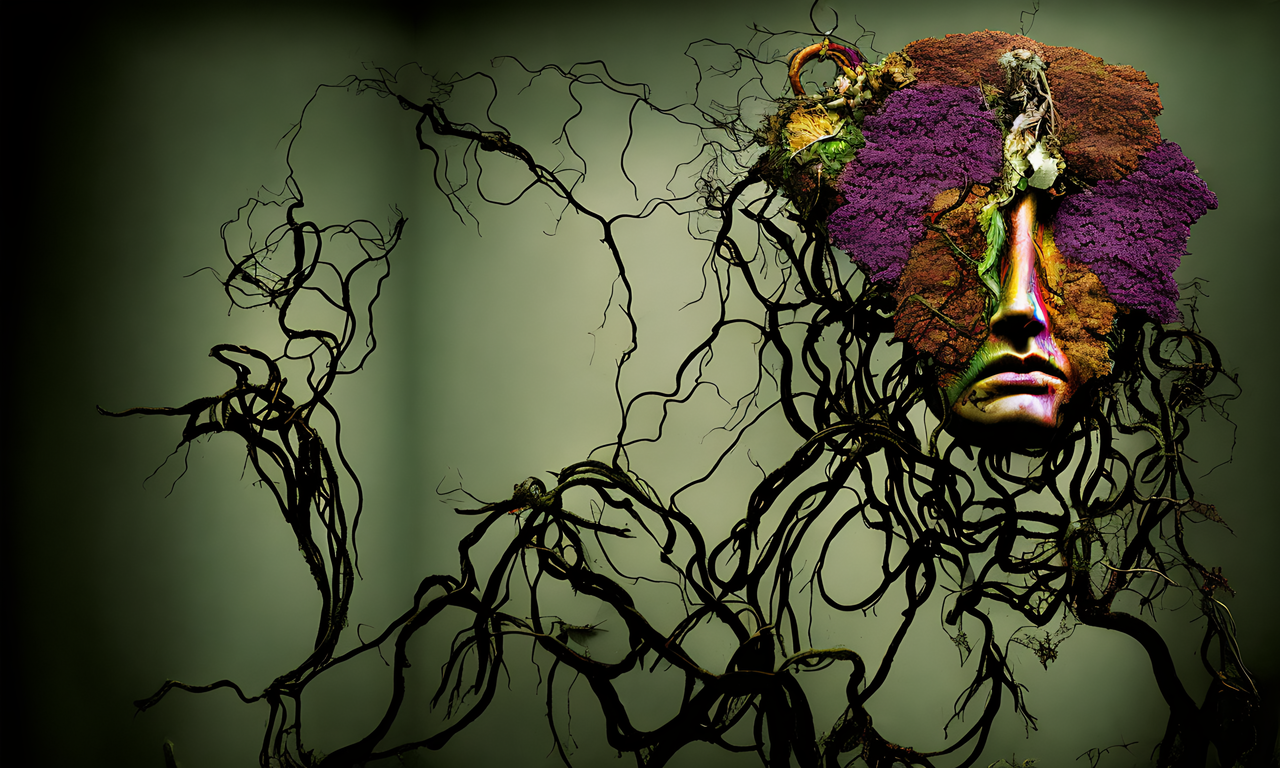
These plants are the only species where an individual can indulge in spatial travel. They criss-cross the vegetal layers, connecting, entangling and confusing their dwellers. Their tangles are communication conduits between the layers above ground. Yet the information that passes through the twining vines rarely arrives unchanged – translation is never perfect, always enigmatic and slightly glitchy. As their shape reflects their journeys for the rest of their lives, the vines take utmost care of the twining and tangling of their paths, creating magnificent, twisting and undulating ornaments throughout the landscape. On their travels, they grip the ground lightly, never venturing underground.

Beehives speaking tulip tongued to anyone who listens, across the wall, another wall and another, food for the vines and entanglings and the empty spaces that once held gardens of their gardens.
❧
Further Reading & references can be found in the bibliography.